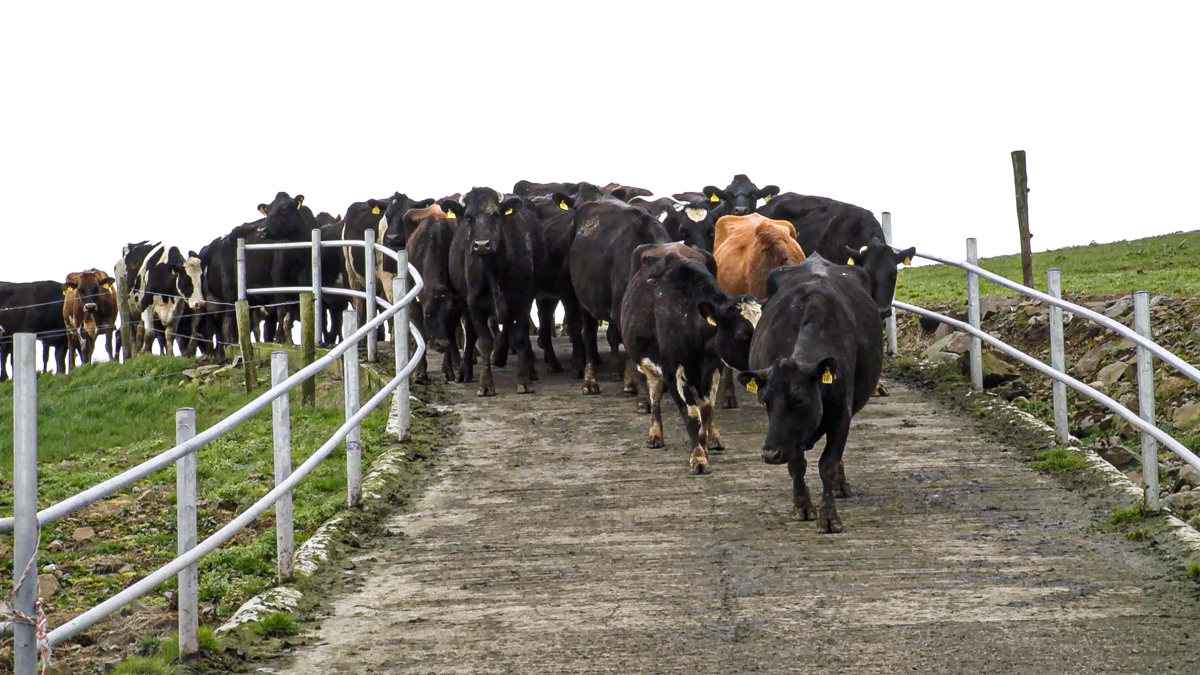Somatic cell count (SCC) can often start to rise in the few months of the lactation due to harsher weather, difficult grazing conditions, and cows slowly transitioning to the indoor climate.
Producing milk at this time of the year might not be delivering flamboyant litres, but it is definitely some of the most valuable milk of the year, as high fat and protein percentages means that the final few weeks and months is crucial for maximising the amount of solids sold.
However, incidences of high levels of SCC may not only reduce your milk yield and quality but can also result in milk price penalties, higher treatment costs, and long-term production losses.
High SCC occurs from bacteria entering the teat canal, leading to mastitis. If it occurs in late lactation, it is deteriorating the value of already very valuable milk and may affect plans for selective dry cow therapy for drying off cows.
Limiting SCC
Strict control of SCC starts with milk recording, as it gives a clear indication to the best and worst performers in the herd.
Cows that have had a bad history of mastitis or a consistently high somatic cell count (SCC) over the last year should be considered for early culling, or marked for an antibiotic at drying-off if they have had a higher SCC than the threshold you have set.
Cows that have had no history of mastitis and have produced high quality milk with a low SCC throughout the year should not require an antibiotic, and should just be given a sealant at drying-off.
If SCC is rising and falls in between milk recordings, California milk testing (CMT) is a handy measure to use.
It involves squirting a drop of milk from each teat into a tray and swirling it back and forth to see how the milk reacts with the reagent.
If a thickness becomes evident when swirling and when emptying the wells solution or it it sticks to the paddle, there is an issue in the quarter. It could mean the SCC of this quarter is over 2,000,000 cells/ml.
Even though it is now approaching the final few months of the year for milking cows, the milking machine cannot be overlooked, as a poorly functioning machine can damage teat ends, which will increase the risk of infection.
At this time of the year, when access to paddock is becoming more of a challenge, it is not unusual for cows to be coming into the parlour a bit dirtier. Therefore ensure that udders and teat ends are cleaned before the cluster is put on.
Farmers should be using nitrile gloves to reduce bacterial transfer. Continue applying the correct volume of post-milking teat disinfectant of 15ml/cow/milking to ensure teat skin health and help reduce infection.

Liners need to be changed every 2,000 milking or every six months as worn liners will pinch cows, leading to discomfort and will compromise teat health and harbour bacteria.
If a couple of clinical mastitis and high-SCC cows have been identified in the group, leave these to be milked last to avoid spreading infection to healthy cows.
If this is not possible or not practical, dip the clusters in a peracetic acid solution of 3ml per litre of water after milking a high-SCC or mastitis cow. This will help break the infection cycle and reduce cross-contamination risk
In addition, cluster flush systems automatically, and do this in between each milking.
If any of these cows are persistently infected, they are going to be a continuous source of infection and will continue to spread infection to healthy cows if they are not culled.
Farmers should also collect sterile milk samples from the infected quarters for lab analysis to identify the bacteria type and the appropriate antibiotic of choice for both lactation and dry cow therapy.
If the bacteria causing the problem can be found, it can be treated effectively.

